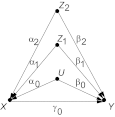Invited commentary: understanding bias amplification
- PMID: 22034488
- PMCID: PMC3224255
- DOI: 10.1093/aje/kwr352
Invited commentary: understanding bias amplification
Abstract
In choosing covariates for adjustment or inclusion in propensity score analysis, researchers must weigh the benefit of reducing confounding bias carried by those covariates against the risk of amplifying residual bias carried by unmeasured confounders. The latter is characteristic of covariates that act like instrumental variables-that is, variables that are more strongly associated with the exposure than with the outcome. In this issue of the Journal (Am J Epidemiol. 2011;174(11):1213-1222), Myers et al. compare the bias amplification of a near-instrumental variable with its bias-reducing potential and suggest that, in practice, the latter outweighs the former. The author of this commentary sheds broader light on this comparison by considering the cumulative effects of conditioning on multiple covariates and showing that bias amplification may build up at a faster rate than bias reduction. The author further derives a partial order on sets of covariates which reveals preference for conditioning on outcome-related, rather than exposure-related, confounders.
Figures




Comment on
-
Effects of adjusting for instrumental variables on bias and precision of effect estimates.Am J Epidemiol. 2011 Dec 1;174(11):1213-22. doi: 10.1093/aje/kwr364. Epub 2011 Oct 24. Am J Epidemiol. 2011. PMID: 22025356 Free PMC article.
References
-
- Bhattacharya J, Vogt W. Do Instrumental Variables Belong in Propensity Scores? (NBER Technical Working Paper no. 343). Cambridge, MA: National Bureau of Economic Research; 2007.
-
- Wooldridge J. Should instrumental variables be used as matching variables? East Lansing, MI: Michigan State University; 2009. ( https://www.msu.edu/∼ec/faculty/wooldridge/current%20research/treat1r6.pdf). (Accessed July 2010)
-
- Pearl J. Proceedings of the Twenty-Sixth Conference on Uncertainty in Artificial Intelligence (UAI 2010) Corvallis, OR: Association for Uncertainty in Artificial Intelligence; 2010. On a class of bias-amplifying variables that endanger effect estimates; pp. 425–432. ( http://ftp.cs.ucla.edu/pub/stat_ser/r356.pdf). (Accessed September 2011)
-
- White H, Lu X. Causal diagrams for treatment effect estimation with application to efficient covariate selection. Rev Econ Stat. In press

